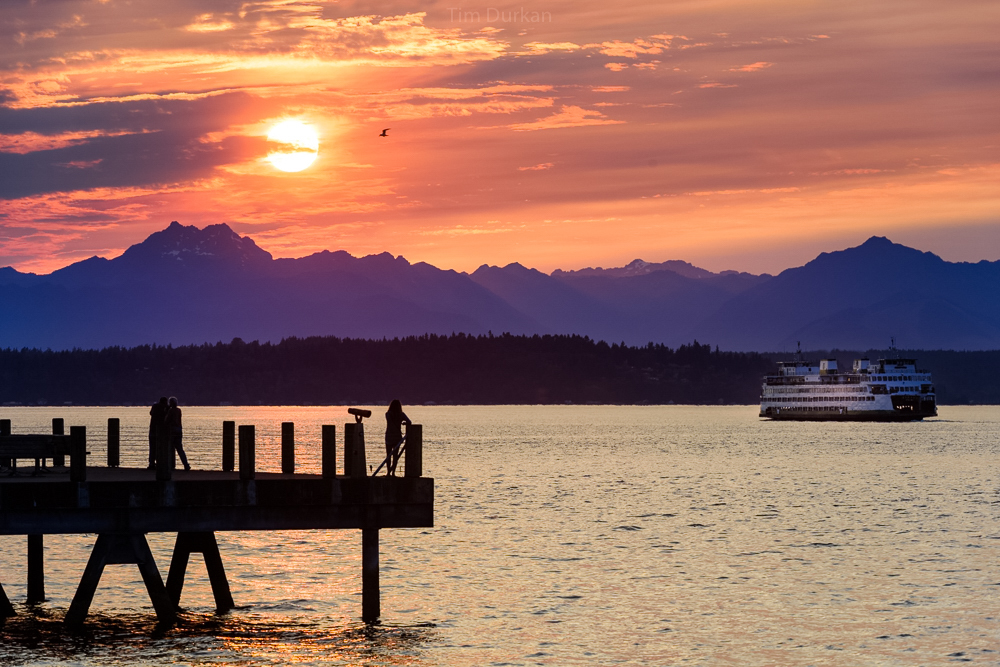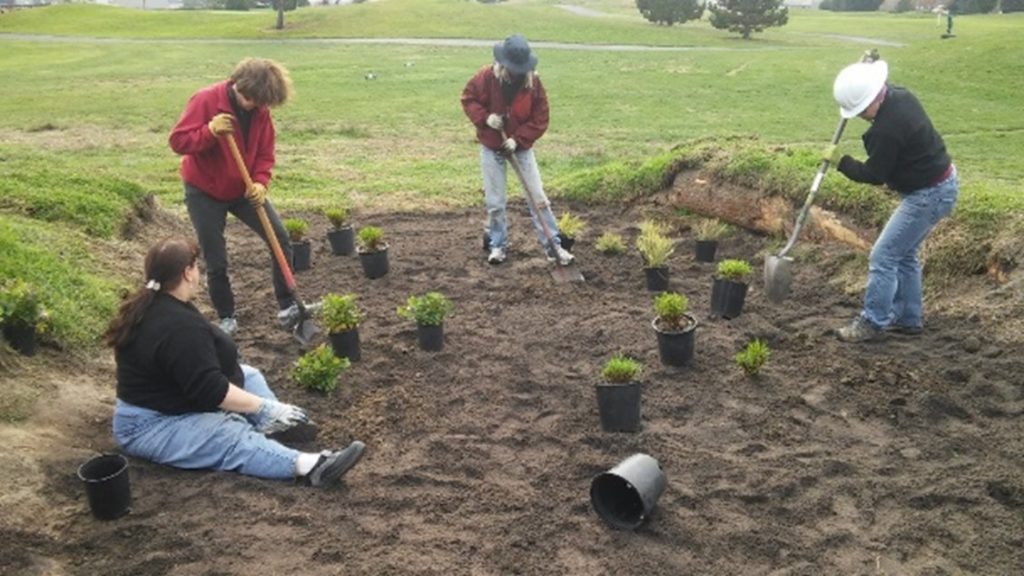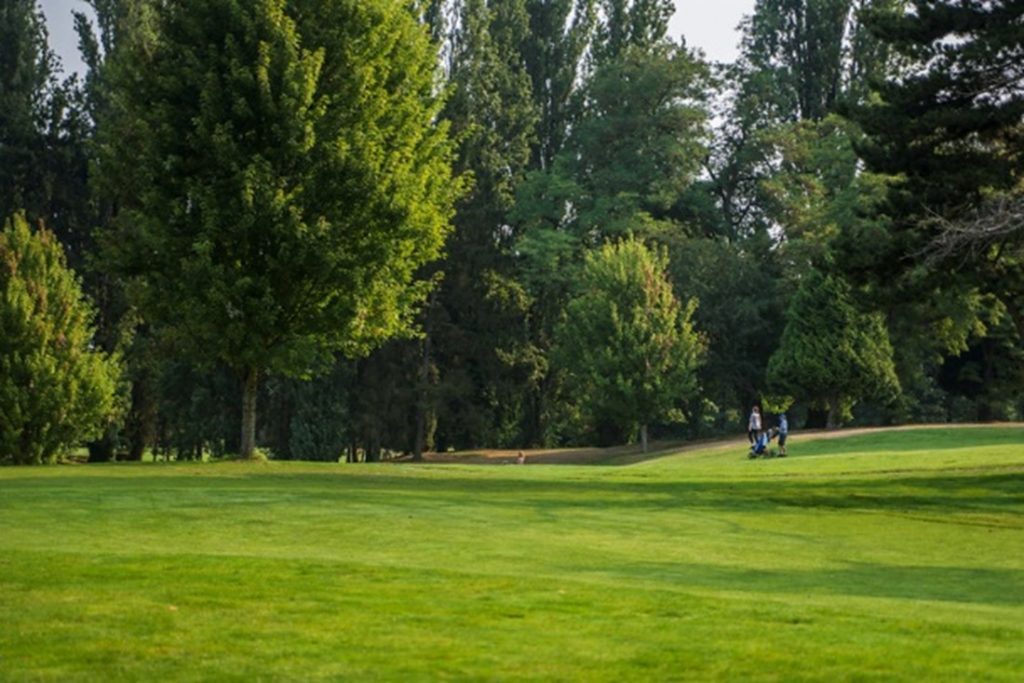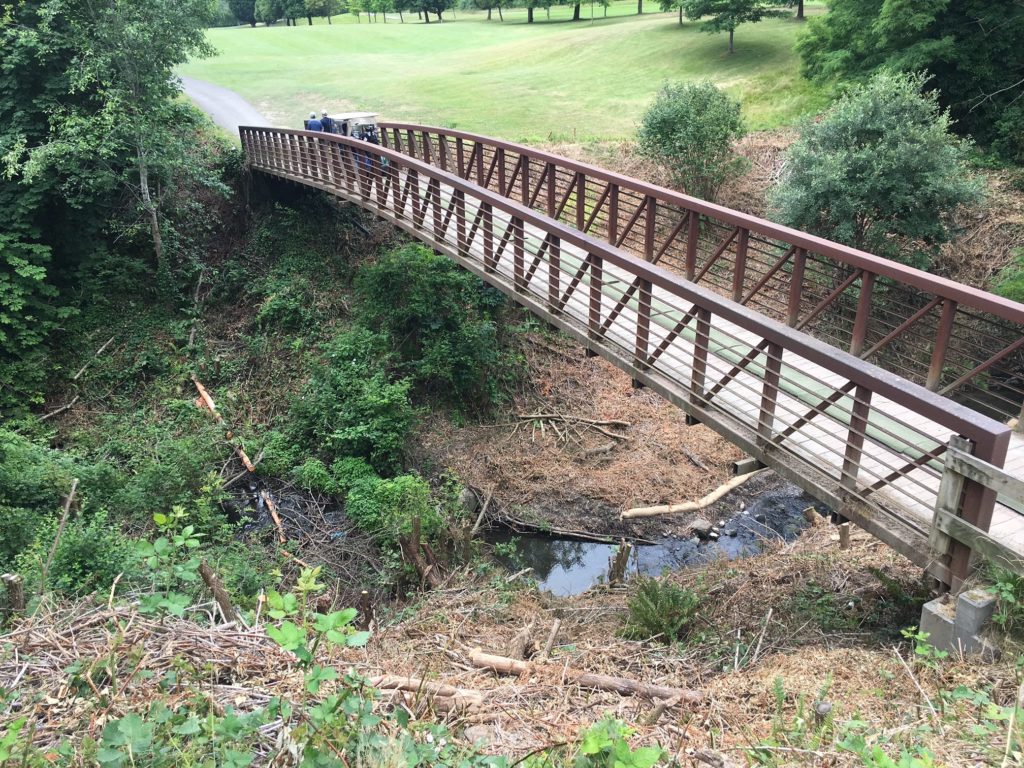
By Greg Van Hollebeke, Rocky Tharp, Michael Yadrick, and Todd Burley
When most people think of parks, they don’t initially picture golf courses, but Seattle Parks and Recreation (SPR) manages four courses – West Seattle, Interbay, Jefferson, and Jackson Golf Courses – that provide recreational opportunities for many. In fact, 528 acres (8 percent) of Seattle’s parks are managed in these public golf courses. These parks are well loved. A 2017 study by EMC Research found 13 percent of residents use Seattle public golf courses two or more times per year. Yet, beyond their recreational benefits for people, these public spaces also contain natural areas, habitat for urban wildlife, and even two salmon-bearing streams.
Seattle’s public golf courses are home to many wildlife species. Coyotes, beavers, raccoons, Pacific Treefrogs, and even river otters live in and visit these open spaces. Dozens of bird species call these parks home, including Wood Ducks, American Wigeons, Great Blue Herons, Green-backed Herons, Rufous Hummingbirds, Pileated Woodpeckers, Cedar Waxwings, Barn Owls, and many others. Trout live in Thornton and Longfellow Creeks, and downstream of the golf courses there are Sockeye, Chum and Coho Salmon, as well. There is even a coyote study being conducted at Jackson Park Golf Course by the University of Washington. These wild animals may not be playing a round of golf, but they rely on the habitat in these parks to live in our city.
Much of the habitat for this wildlife is contained in the edges and natural areas within the golf courses. The Green Seattle Partnership, SPR’s urban forest restoration program, has identified 85 acres within golf courses for restoration, and is already working in 30 acres. These forests also often link up to adjacent natural areas, extending the habitat that is available. Interbay Golf Course is a significant greenspace in the neighborhood that is crucial as a nature corridor for wildlife. In all these spaces, staff and volunteers remove invasive plants and plant native species that continue to support our urban animals.
In addition to the forested areas in and around Seattle’s golf courses, the edges of the fairways (the “rough”) provides habitat for pollinators and other meadow-loving species. An inconvenience for golfers is a rich and diverse habitat for insects, birds, and other wildlife. These meadows are generally left to remain natural with no use of pesticides, fertilizers, or other inputs, including water. Other intentional efforts are underway, starting with a pollinator garden at Interbay Golf Course as part of an effort to achieve sustainability certification with Audubon International.
Part of managing golf courses sustainably includes ensuring that the water that flows into it and out of it is healthy for aquatic and other wildlife. At Jackson Park and West Seattle Golf Courses, readings have shown that the water quality that exits the course is as clean or actually cleaner than the water that enters it. As parks that contain salmon-bearing streams, it is important that SPR manages for the health of not just the wildlife we can see, but those that exist in the water for all or part of their lives.
So next time you are thinking of going bird watching, or looking to spend some time in nature, consider grabbing some clubs and your binoculars and heading to one of Seattle’s public golf courses. Or if you’re not wanting to tee-up, then take a walk around the new Jackson Park Trail. You never know what you might see…




